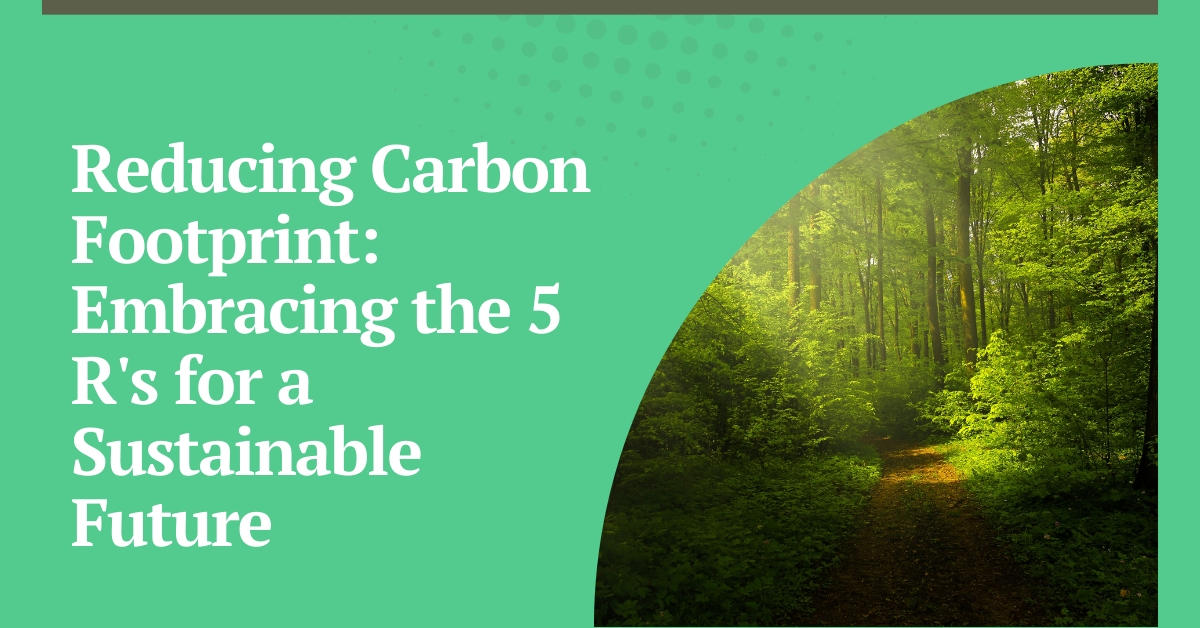In the realm of corporate sustainability and environmental responsibility, managing carbon footprints has become a pivotal focus for businesses worldwide. As organizations strive to mitigate their impact on climate change and align with global sustainability goals, understanding the principles of carbon footprint management is essential. One fundamental framework that guides effective carbon footprint reduction strategies is encapsulated in the concept of the 5 R’s:
1. Reduce
The first ‘R’ emphasizes the importance of reducing carbon emissions at the source. This involves implementing measures to minimize energy consumption, optimize operational efficiencies, and adopt cleaner technologies. By reducing the amount of greenhouse gases released into the atmosphere, businesses can significantly lower their carbon footprint and enhance overall sustainability.
2. Reuse
The second ‘R’ focuses on reusing materials and resources wherever possible to prolong their lifecycle and reduce waste generation. In the context of carbon footprint management, reusing components and products helps conserve energy and raw materials that would otherwise be required for manufacturing new items. By promoting a circular economy mindset, businesses can contribute to sustainability by minimizing resource extraction and emissions associated with production.
3. Recycle
Recycling is crucial in the 5 R’s framework, as it ensures that materials are recovered and reintegrated into the production process. By recycling materials like paper, plastics, metals, and electronics, businesses can reduce the demand for virgin resources, conserve energy, and mitigate the environmental impact of waste disposal. Incorporating comprehensive recycling programs within operations supports sustainable practices and reduces the overall carbon footprint.
4. Replace
The fourth ‘R’ involves replacing traditional practices and products with more sustainable alternatives. This includes transitioning to renewable energy sources such as solar, wind, and hydroelectric power to reduce reliance on fossil fuels. Additionally, replacing outdated equipment and technologies with energy-efficient models helps lower emissions and operational costs while promoting environmental stewardship.
5. Offset
The fifth ‘R’ acknowledges that some emissions may be unavoidable despite efforts to reduce and mitigate them. Carbon offsetting allows businesses to compensate for their remaining emissions by investing in projects that sequester carbon or reduce greenhouse gas emissions elsewhere. Examples include funding reforestation initiatives, supporting renewable energy projects, or implementing methane capture technologies. Carbon offsetting provides a mechanism for achieving carbon neutrality and aligning with sustainability goals.
Conclusion
In conclusion, adopting the principles of the 5 R’s—Reduce, Reuse, Recycle, Replace, and Offset—forms a comprehensive framework for effective carbon footprint management and sustainability practices within businesses. By integrating these principles into corporate strategies and operations, organizations can enhance environmental performance, demonstrate leadership in sustainability, and contribute positively to global efforts to combat climate change.
At Climekare, we specialize in providing carbon footprint and sustainability solutions tailored to meet the unique needs of international businesses. Contact us to learn more about how our expertise and innovative approaches can support your carbon neutrality and environmental excellence journey.
Together, let’s embrace the 5 R’s and pave the way for a more sustainable future.


